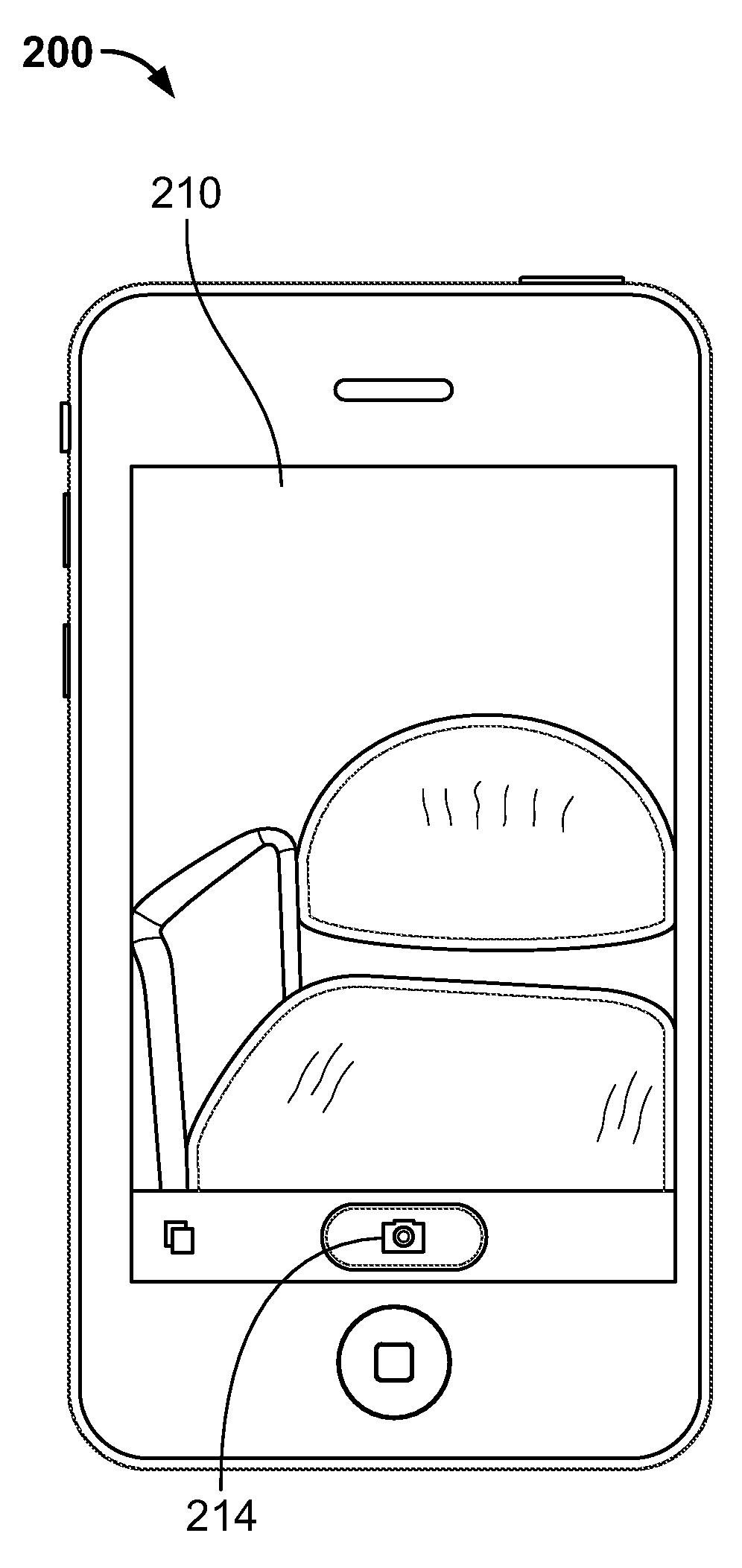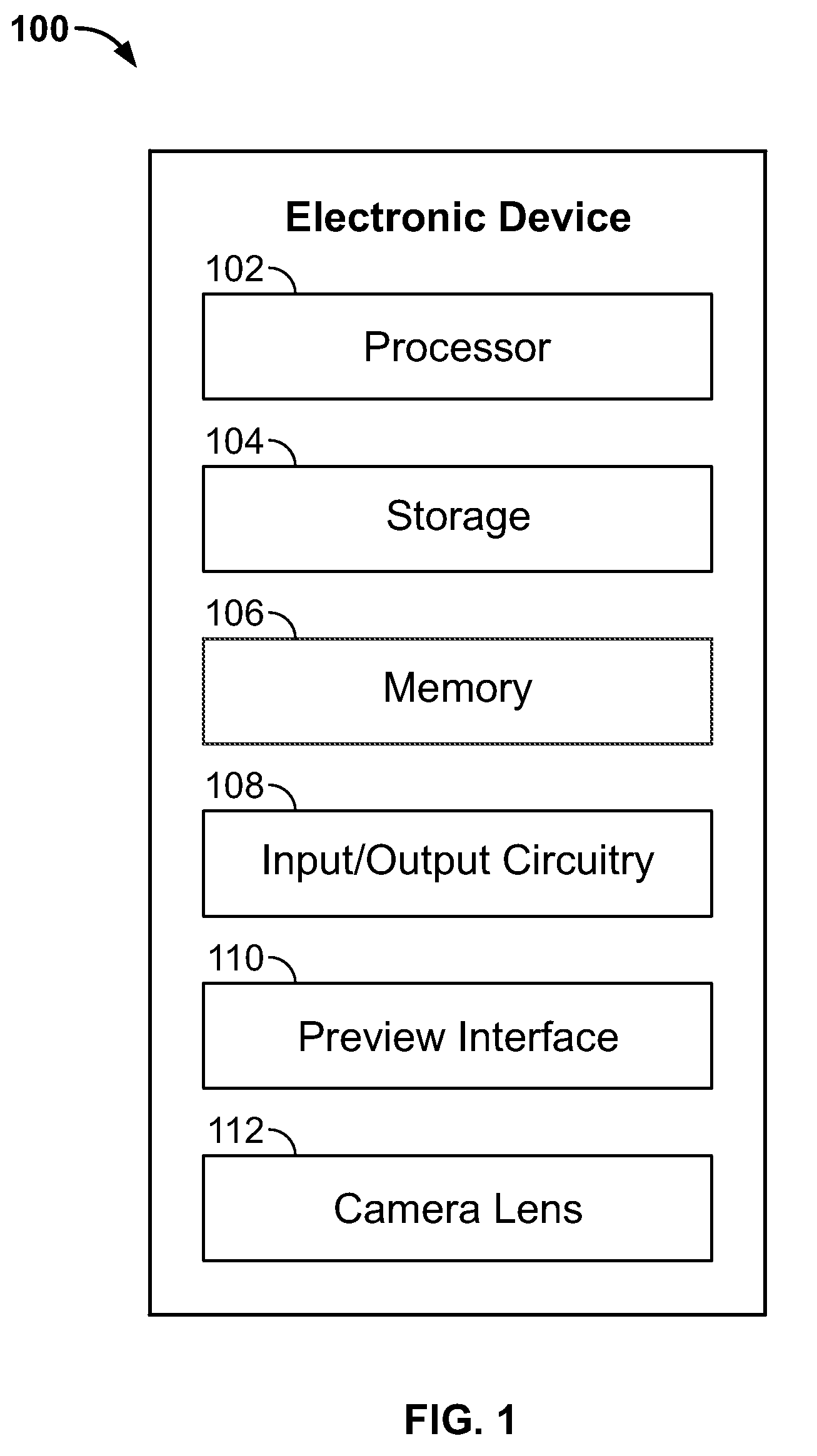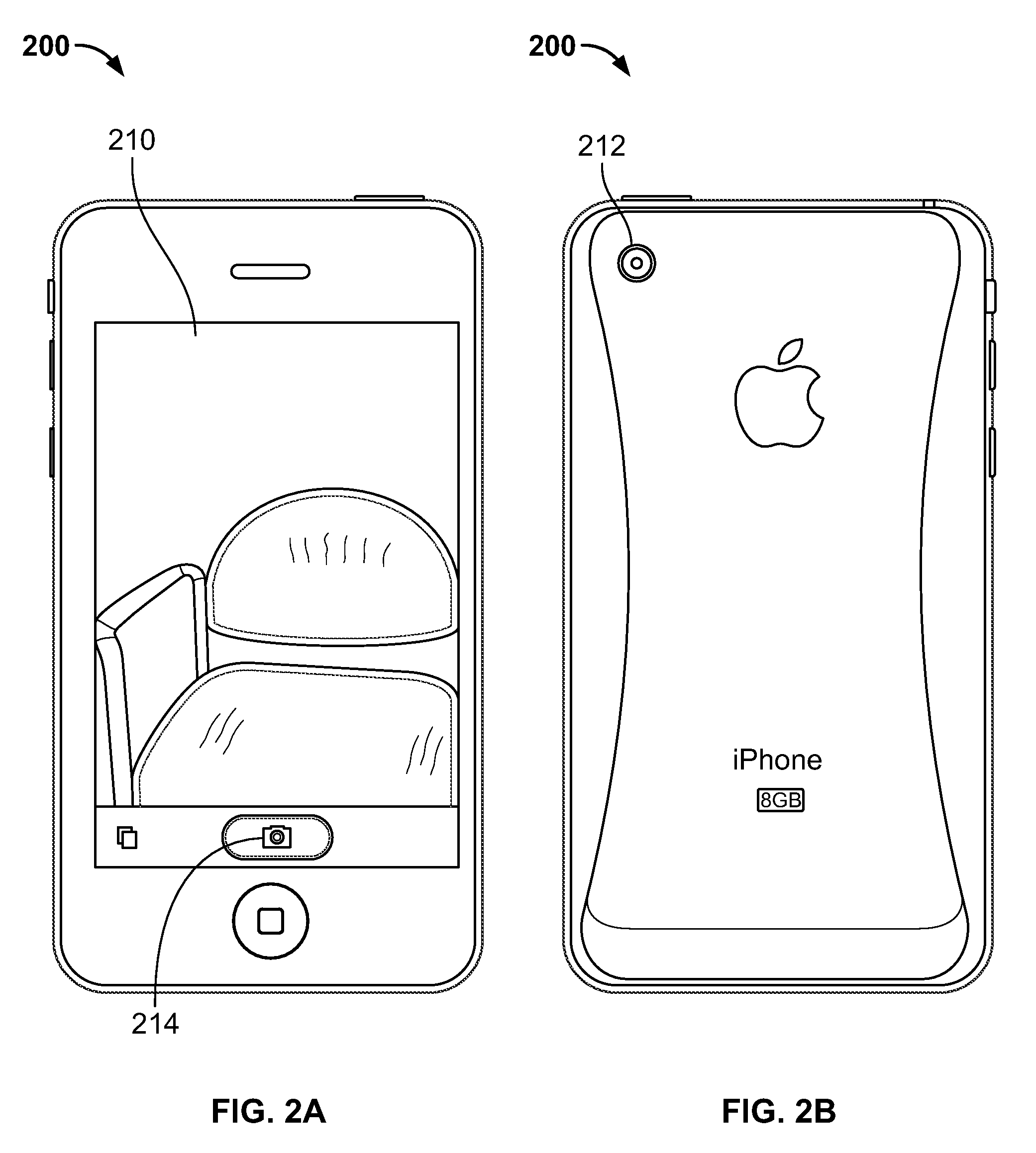Systems and methods for centering a photograph without viewing a preview of the photograph
a technology applied in the field of system and method, can solve the problem that the user may not be able to see the image that will be taken by the lens, and achieve the effect of enhancing the user's photograph, removing undesirable artifacts from the image, and enhancing the photograph
- Summary
- Abstract
- Description
- Claims
- Application Information
AI Technical Summary
Benefits of technology
Problems solved by technology
Method used
Image
Examples
Embodiment Construction
[0016]This is directed to systems and methods for storing a captured image without previewing the image before it is stored. For example, this is directed to systems and methods for taking self-portraits using an electronic device for which the image preview interface faces a side of the device other than the side on which the camera lens is placed.
[0017]An electronic device can be operative to capture images of a user's environment. For example, an electronic device can include an optical or digital lens operative to capture light reflected from the user's environment. The electronic device may be operative to store particular images captured by the lens for playback (e.g., to print or to send electronically for others to view). The electronic device can store images at any suitable time, including for example in response to receiving a user instruction (e.g., in response to a user providing an input using an input interface), after a delay (e.g., in a timer mode), or automatically...
PUM
 Login to View More
Login to View More Abstract
Description
Claims
Application Information
 Login to View More
Login to View More - R&D
- Intellectual Property
- Life Sciences
- Materials
- Tech Scout
- Unparalleled Data Quality
- Higher Quality Content
- 60% Fewer Hallucinations
Browse by: Latest US Patents, China's latest patents, Technical Efficacy Thesaurus, Application Domain, Technology Topic, Popular Technical Reports.
© 2025 PatSnap. All rights reserved.Legal|Privacy policy|Modern Slavery Act Transparency Statement|Sitemap|About US| Contact US: help@patsnap.com



